Viral reflections: Alumni unravel pandemic's impact on them
Editor’s note: These impressions were collected shortly before vaccinations against COVID-19 were distributed. This article was originally published in the Winter-Spring 2021 edition of Mississippi Medicine, the medical alumni magazine.
Fear, frustration, hopelessness and grief: As they continue to confront the COVID-19 pandemic, physicians are no more immune to these emotions than the patients they treat.
This is borne out by the following impressions collected from School of Medicine alumni scattered from Brookhaven to Ohio.
Still, many have also managed to reclaim a sense of hope, stirred by new discoveries, their patients’ conduct and their colleagues’ courage.
“He requested to say goodbye to his wife.”
DR. ANGEL BROWN (’09), Internal medicine, pulmonary and critical care medicine fellow, northwest Georgia
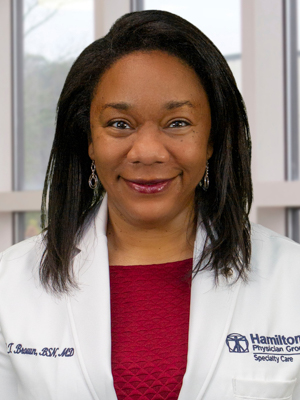
For as long as I can remember the hospital has always been my happy place. I did not think that there was anything that would change the way I feel walking into that environment.
On March 9, 2020, I got a call to admit a patient to ICU for possible sepsis. He was on isolation for possible COVID-19. He was tested. But the test was pending. His vitals were fairly normal. It was a boring evaluation.
He did have a very elevated white blood cell count; blood pressure was normal, but on the lower end, and his chief complaint was diarrhea and poor appetite, not difficulty breathing. His medical history included obesity, but not morbid, and hypertension. His physical exam was normal as well.
It was not until the end of the interaction, when he mentioned a friend of his was also in the ER for similar complaints, that red flags went off. By then I had spent 30 minutes or more with the patient; I started developing a little uneasiness in the pit of my stomach.
By the next morning that patient, along with his friend and a third patient, were all in acute respiratory failure on maximum, non-invasive supplemental oxygen. I intubated all three, going from room to room in the ICU that morning.
Prior to my intubating the friend, an 88-year-old church choir member, he requested to say goodbye to his wife. We connected him via video call and they prayed together and said their goodbyes. That broke my heart. And that would be the calm before the storm.
By March 16, the hospital went from 70 percent full to more than 120 percent full by converting triage rooms and holding areas into patient spaces. By March 18, there was real concern that we might run out of personal protective equipment. That’s when I became alarmed.
On some days, I was the only pulmonologist and intensivist for that facility. If I get sick what would happen to the patients? I, too, have underlying conditions, hypertension and asthma, both well controlled. And at that time there were so many questions regarding who got sick, who recovered and who died from the disease.
I am usually a cheerleader for the nurses, for the patients and for other physicians. The ICU prior to COVID could be a sad place. But during the last week in March and early April, the entire hospital became a depressed place to be.
We, doctors and nurses, were seeing patients die in high numbers, and staff were afraid of contracting the virus themselves. My low came on March 22. I rounded on 34 patients; 20 were COVID-positive or presumed. That is a lot of gowning and de-gowning. This process added two to three minutes to every patient encounter.
On that day, one of the straps on my N95 broke and I had to go sign out another. When I stopped to look around the unit, the large, red DO NOT ENTER THIS UNIT signs and plastic blue gowns hanging on every door flapping from the fan-generated breeze brought me to tears.
There were no visitors, no sound, no joy; and I was overcome with a great sense of hopelessness and helplessness that I had not experienced before or since.
By the end of March, I was dubbed “the COVID doctor” by one of the cardiologists and the infectious disease doctor, since I seemed to be doing all of the intubations on those patients. I think it was supposed to be a compliment.
I stayed very busy working in that small community hospital through May 1. Our governor issued a stay-at-home order, and the number of admissions declined.
One of the first three COVD patients I had intubated, on March 10, left the hospital on room air. He was weak from a prolonged stay, but at 88 years old, he went home to his wife.
I could see the light at the end of a long, dark tunnel.
— — —
“A patient was dying …”
DR. ASTRID SARVIS (’10), Pediatric emergency medicine, south Florida
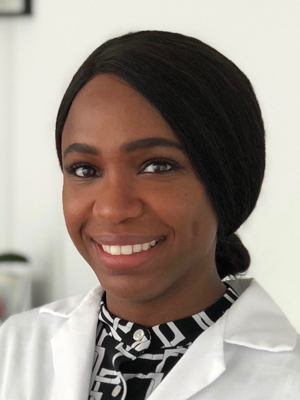
My experience, as a pediatric emergency medicine physician who only sees children, has been different from that of my adult ER colleagues.
The biggest issue I and many of my pediatric colleagues are facing is one of job security.
Many other hospitals have had to cut physician hours and furlough other staff. [Here], PA’s/NPs were furloughed – some of whom I considered friends.
My hours, and pay, have gone down by one-third. Other physicians have also had reduced hours and pay, to varying degrees. The hospital has bent over backwards to maintain physician employment.
Early on, hospitals had to deal with lack of PPE. It was very frustrating for everyone. Faculty members and administrators were buying their own supply from the internet and distributing them to colleagues.
People were told by county public health officials and hospitals themselves to avoid the ER for trivial or non-emergency issues, which coupled people’s fear of contracting COVID. But we also feared that patients who needed to come were not coming in.
Parents’ lingering fears and newfound appreciation for telehealth visits will keep them from coming to the ED in the future.
Kids who did come in ended up being scattered throughout the ER, often next to adult patients.
We started hearing reports of kids coming in in cardiac arrest, with symptoms resembling another disease we’re familiar with in the pediatric world, Kawasaki. Dozens of these kids were being reported in the U.S. as early as April.
In response to this, I did some research and quickly wrote up an algorithm to aid providers in emergency departments in detecting and treating children suspected of having this illness.
With kids in the ER next to adult patients, I was amidst all the chaos and COVID exposure happening on the adult side. Pediatric nurses were shunted to the adult side without adult-ER experience.
Two particular nurses were integral to how well I adjusted to working there when I first began. They were moved to the adult side. I remember one of them coming to me in tears. A patient was dying, no family was allowed in, and no nurses wanted to go in there.
This nurse also hesitated because she had insufficient/outdated PPE, but felt compelled to go in anyway.
The patient had been very emotional as she thanked the nurse for just being present so she wouldn’t suffer alone. That nurse became really sick on shift, which was a combination of stress, and being overworked and being exposed to COVID and other illnesses.
The other nurse, the aforementioned nurse’s best friend, actually caught COVID. She was in the ED.
This nurse is a super bubbly, optimistic lady. I walked by her room, and peered through the window, and saw how she could hardly raise her hand to say hi. I wanted to go in and hug her. But, of course, that was out of the question.
— — —
“[P]rematurity rates were dramatically reduced early in the pandemic – we do not yet know why.”
DR. JOHN A. BARNARD (’80), Ann I. Wolfe Chair in Pediatric Research; president, Abigail Wexner Research Institute at Nationwide Children’s Hospital; professor and chair, Department of Pediatrics, The Ohio State University College of Medicine, Columbus
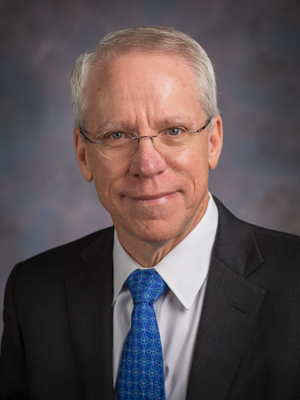
In Columbus and across the country we have learned that COVID-19 is usually mild in children. In the first seven months of the pandemic, we admitted to the hospital only 84 symptomatic children with COVID-19. Of these, only 12 needed intensive care.
Some in the intensive care unit have been critically ill, on ventilators for days. Some of the sickest have had co-morbidities, like immune deficiency syndromes, sickle cell disease or type 1 diabetes.
Despite the infection being mild in most children, there may be long-lasting, adverse collateral implications for child health. This is what pediatricians worry most about.
For example, behavioral health visits have sky-rocketed. Under the strain of unemployment and crowding because of stay-at-home orders, we have found child abuse on the rise. More cases may be undetected.
Poison control calls, burns and gunshot injuries in children are increased. Immunization, lead screening, dental visits and other preventive health measures are markedly reduced.
The consequences of these shortcomings in preventive care may play out for years to come, creating a second public health crisis.
Every cloud has a silver lining and so does the SARS-CoV-2 pandemic. Pediatric emergency department visits and hospitalizations for asthma exacerbations are reduced – likely because triggering respiratory tract infections are less frequent right now.
Common childhood illnesses like croup; hand, foot and mouth disease; and even febrile seizures are also
unusually uncommon. In some areas of the world and in Columbus, prematurity rates were dramatically reduced early in the pandemic – we do not yet know why.
Data from the Southern Hemisphere show a profound drop in respiratory syncytial virus and influenza hospitalizations in children [for 2020] – hopeful news for our winter of 2020-2021.
At home, the Barnards are managing just fine. An adverse outcome of the pandemic for me has been the cancellation of the 1980 University of Mississippi Medical School Class Reunion.
Hopefully, our 40th reunion can happen later, for I miss my Mississippi roots. Nearly every day, I rely on the exquisite training and learning from UMMC.
I happily relish this tether back to my home state and medical alma mater. Even though I left years ago, it feels like I have never really gone.
— — —
“Putting shots in arms is the easy part …”
DR. PAUL BYERS (’92), State Epidemiologist, Mississippi State Department of Health, Jackson
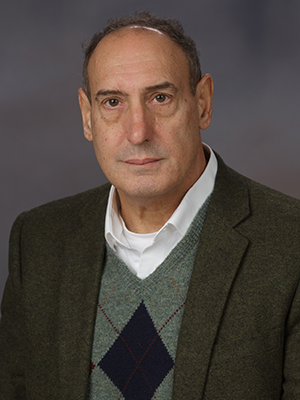
Without a doubt, COVID-19 has had a profound impact on me in several ways. So much is still unknown regarding COVID-19; it requires learning as we go.
We strive to get the latest information out to the public and, working closely with epidemiologists in our office, we have developed a website with a plethora of data. The data and its trends really lead decisions about what preventive guidelines to put in place and where.
We have experienced numerous hurdles so far in this ongoing pandemic— from safe start of schools and colleges, public buy-in for masking and physical distancing, and weathering a large increase in cases over the summer.
For me, the most difficult part has been the deaths, and the impact on the nursing homes and long-term care settings.
Upcoming challenges include the timing, safety and efficacy concerns and distribution plans for a COVID-19 vaccine. There are many logistical pieces to put in place; we will likely have limited doses to start with and will need to distribute those initially to the tiers at highest risk.
Putting shots in arms is the easy part, but the devil is in the details, and while we have come a long way with our planning, we still have much planning to do.
I am hopeful for the future, but we can’t let our guard down. Some of my biggest goals continue to be limiting transmission and deaths, protecting the most vulnerable in our population and maintaining our health care capacity.
I do believe we can continue to work together to do those things we have talked about over and over again—wear a mask, avoid large gatherings, physical distancing – all of which have demonstrated effectiveness and we have evidence to prove it.
— — —
“The dam of tears I had been holding back broke
wide open …”
DR. MARGARET HAYES BAKER(’12), Internal medicine program director, Magnolia Regional Health Center, Corinth with DR. KAYCEE BURCHAM – “KB” (’18), Internal medicine resident, Magnolia Regional Health Center, Corinth
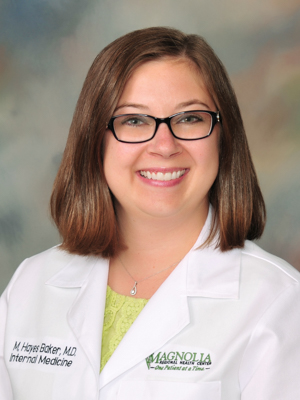
When the pandemic first began, my biggest fear was a family member or a trainee becoming seriously ill or losing their life to the disease.
My first resident, KB, was diagnosed with COVID at the very end of June. She quarantined away from her family and, although she felt very poorly, was doing well at home. I had her husband bring her a pulse oximeter just to be safe.
I called and checked on her a few times a day, and on one of those calls, she was coughing so much she could barely speak. She sounded ever-so-slightly short of breath. I asked what her oxygen saturation was and she hesitantly admitted that it had been dropping.
My resident, one of the brightest and best trainees I have had in my career, refused to come into the hospital. I just kept thinking that she was going to become so hypoxic that she would go into PEA [cardiac] arrest and no one would know.
My EM colleague called me at 7 the next morning and said she was not able to get in touch with KB. There were about 30 minutes that I was completely panicked inside. I went through the mundane tasks of getting kids ready, making lunches, putting on makeup for work.
That was probably the longest 30 minutes of my career.
Thankfully, we heard from her and she was just fine. After she recovered, I told her in no uncertain terms that I have never been so angry at a resident. However, I was just so incredibly relieved and grateful that she was okay.
A few months later, both of my parents contracted COVID. One day, my mom called and said that she just was not feeling any better. I grabbed a pulse oximeter and my N95 before clinic and went to check on her.
Her oxygen saturation hung out in the low 60’s/upper 50’s. I very calmly told my mom that we were going to the hospital and that we had to go now. Her eyes widened, but she did not attempt to argue. I suspect it was the look on my face that gave my fear away.
As I drove my mom to the hospital, I tried not to think about all the death I had seen in patients less hypoxic than my mother was now.
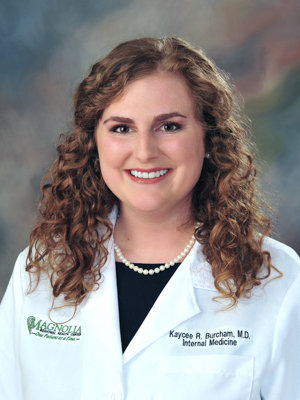
While we were waiting for transport, she asked if I knew where her funeral plans were, “just in case.” I said, “Yes, Mom, they’re in your good Bible, but we’re not going to need them.” All the while, I could not help but wonder if we would.
Transport came, and I went up to the MICU to put on my PPE. The MICU nurses said they heard my mom was coming in with severe hypoxia. The dam of tears I had been holding back broke wide open as I told them we could not let my mom die.
One of them took me to the bathroom and told me I had to pull myself together before going to see her. I dried my tears and put on my PPE and went into the COVID unit to my mom’s room. The nurse smiled and said: “Dr. B, your mom’s O2 [saturation] is 96 percent.”
I said, “Why doesn’t she have on oxygen?!” The nurse, still calm and professional, said: “Dr. B, did you notice your mom’s very pretty gel nails that will prevent an accurate O2 reading?”
The resident on service happened to be KB. About that time, she entered the room and pulled me to the side. She said: “Dr. Baker, I’ve got [a respiratory therapist] bringing high flow up here. I wasn’t sure what shape she would be in.”
I just started laughing, and my mom started laughing and finally the nurse did the same. KB was baffled, and once we told her, she laughed harder than us all.
The irony of KB, who was very ill and needed hospital admission, taking care of my mom, who had pseudohypoxia from gel nails, was not lost on me.
Objectivity and common sense are lost when we ourselves or our loved ones become the patient.
— — —
“I was receiving 30 emails
an hour …”
DR. WILLIAM C. “CLAIBE” YARBROUGH JR. (’81), National program director for pulmonary critical care and sleep medicine, VA Central Office, Chief of pulmonary/critical care/sleep, VA North Texas Health Care System, Dallas; professor, internal medicine, U. T. Southwestern Medical Center
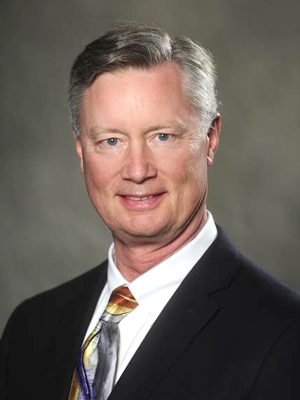
When the pandemic hit our shores, VA did a fantastic job of mobilizing responses and resources to help address issues related to the pandemic.
Every office was involved, and since I am the national director for critical care, I was very much involved in these responses as well.
One amazing resource was a pandemic response paper by the VA Ethics group that had been developed after the H1N1 pandemic. This paper outlined exactly what to do and how to ethically handle issues of limited resources, which was a real possibility when the pandemic hit, especially in China and Italy, and we anticipated here as well.
Fortunately, it was never activated anywhere in this country.
At one point, I was receiving 30 emails an hour, from early morning to late evening. Everyone was working on weekends and available for calls at all times.
One of my staff and our chief of medicine developed the disease; fortunately, neither had to be hospitalized. We rigorously separated using virtual meetings to meet as a group. We developed Tele-Critical Care locally to handle scarce intensivist expertise.
We rotated weekly working in the COVID-19 ICU covering 24/7. This required staying overnight in the hospital if you were covering nights.
Dallas cases dropped significantly, but have picked back up during this new wave.
Personally, Kate and I are part of a group of four couples who have been going out to dinner together every Friday night for over a decade. This had to stop; however, we have converted it to a socially-distanced meeting, rotating in each other’s yards for snacks and BYOB happy hours.
If anyone would like to join a Zoom meeting as a kind of reunion, I would be happy to host.
— — —
“This virus has yielded a feeling of poor control …”
DR. KIM SESSUMS (’84), Obstetrician-gynecologic surgeon, King’s Daughters Medical Center, and Brookhaven OB-GYN Associates, Brookhaven
SESSUMS:
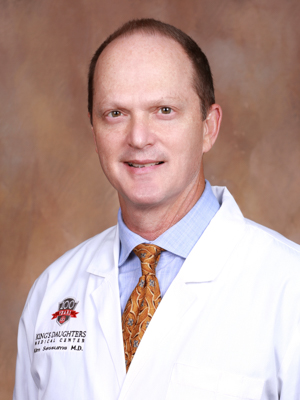
Brookhaven OB-GYN Associates was founded in August, 1988. In the years ahead we have survived the deaths of family members, malpractice trials, Hurricane Katrina, the tragic automobile death of a long-time employee, and various serious illnesses of our physicians and employees.
But the COVID 19 pandemic has had a different sort of impact on our practice.
The unknown, invisible nature of this virus has yielded a feeling of poor control over the environment and nature of the practice of medicine right now. We have seen infections leading to death and others with few clinical symptoms. But that is the point; you don’t know.
Our responsibility has been to heed the advice of public health experts and make the adjustments needed to continue to provide care for our patient population and do so as safely as possible for them and for our staff.
EDITOR’S NOTE: In the fall of 2020, and in addition to his own impressions, Sessums collected those of colleagues: Dr. Jeffrey Ross (’86), chief medical officer, KDMC; Dr. Steve Mills (’84), OB-GYN; and
Dr. Leigh Cher Gray (’98), OB-GYN
ROSS:
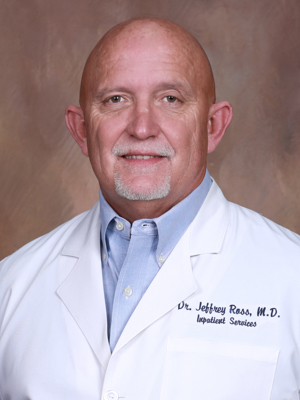
Our local hospital has borne a tremendous load and maintained amazing compassion, discipline and quality of care despite the fatigue and strains on the system.
Months of battling a disease that has so many unknowns began to take its toll.
I can’t ever remember being quite so tired. Just absolutely exhausted. Part of it is the day-in-and-day-out stress.
A lot of the sickest patients have not been able to see their families for the last several months. Our staff has amazed me with their ability and willingness to fill this gap for these families.
MILLS:
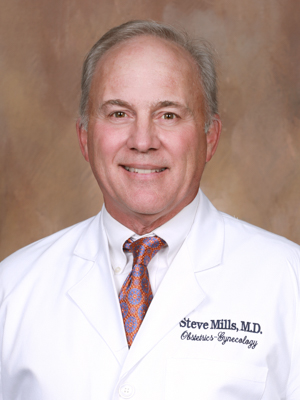
As one who practices only gynecology at this stage, I saw no patients in April or May. In addition, I had to quarantine for 10 days the last of June and first of July.
[This] allowed me to see what retirement might be like, and I discovered quickly that I am not ready to completely stop practicing medicine. I also discovered that not working and carrying the overhead of an office is very expensive.
Grateful to be back seeing patients, even with some restrictions.
GRAY:
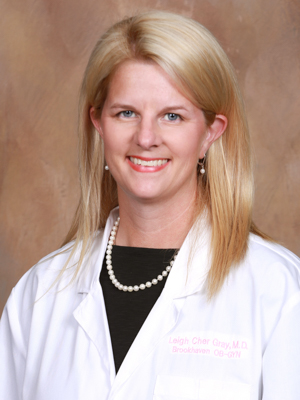
The COVID-19 pandemic has been, in a word, bizarre.
In addition to having a busy OB-GYN practice, I am the mother of four teenage daughters, two of whom graduated from high school amid the strictest of the pandemic times and are now trying to negotiate college freshman life.
The past seven months have been emotionally exhausting. So many of my patients have experienced fear of this unpredictable disease, whether it’s affecting their pregnancy or how their support at home looks with older parents and grandparents who are usually such an intimate part of a new mom’s/newborn’s life.
Then, there is the GYN patient who’s dealing with anxiety related to her elderly parents. And the list just goes on and on. Helping my daughters negotiate this has been similarly tough, just draining.
I really admire the medical doctors and their staff who have taken the brunt of the COVID pandemic, and have just maxed out themselves physically and intellectually, and in turn, emotionally.


